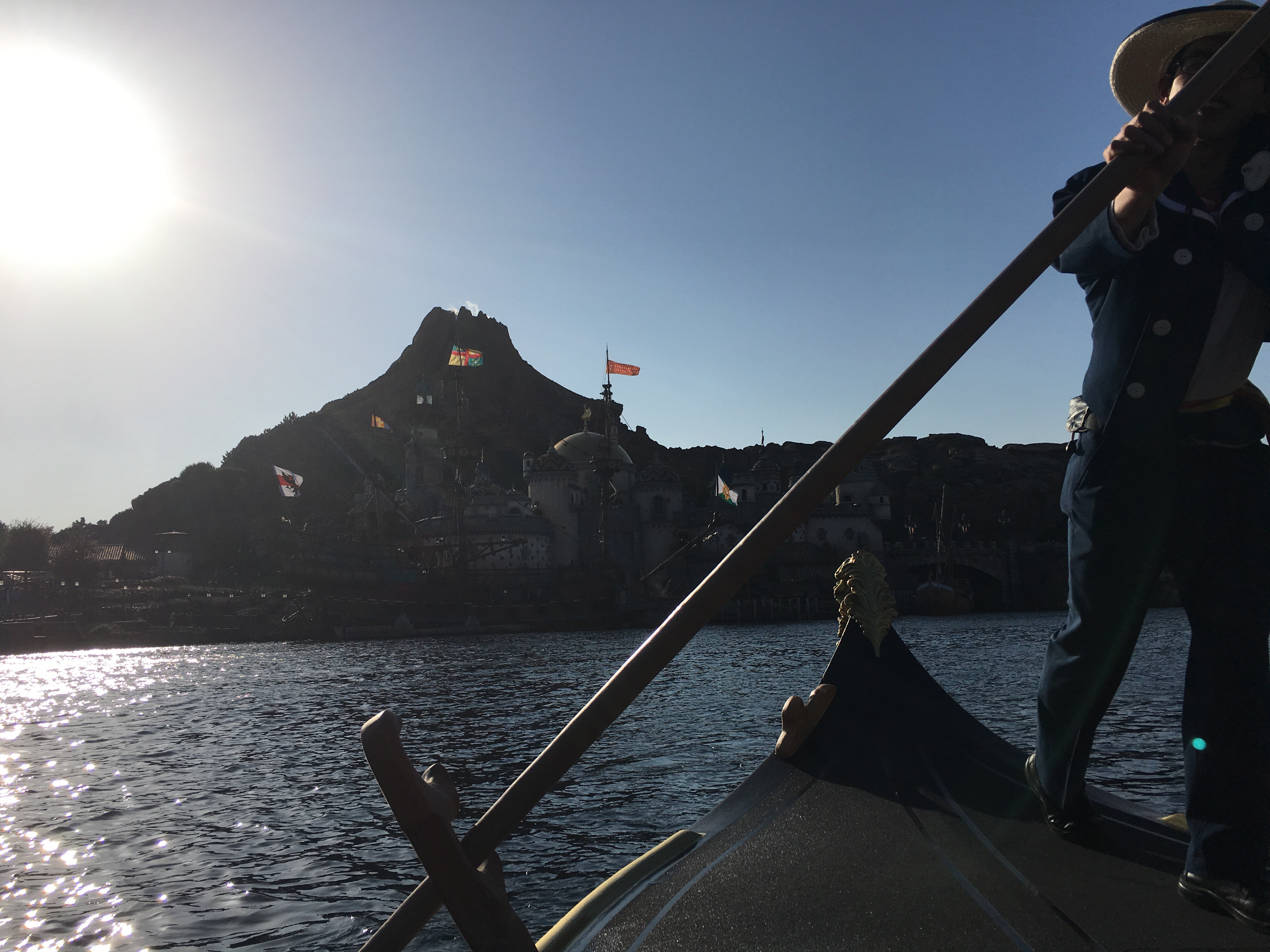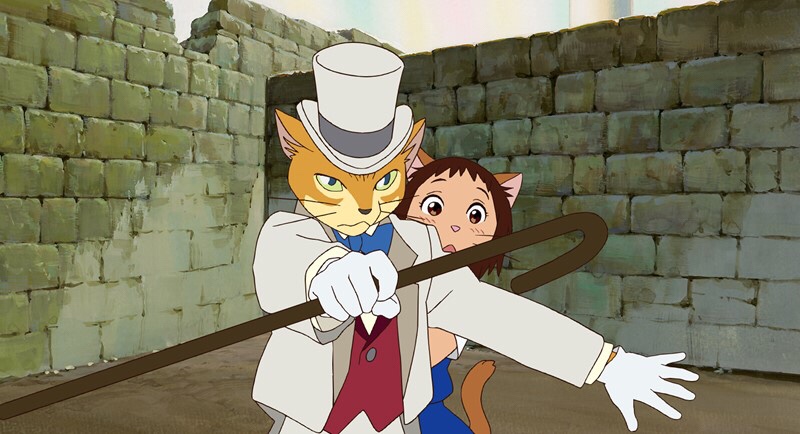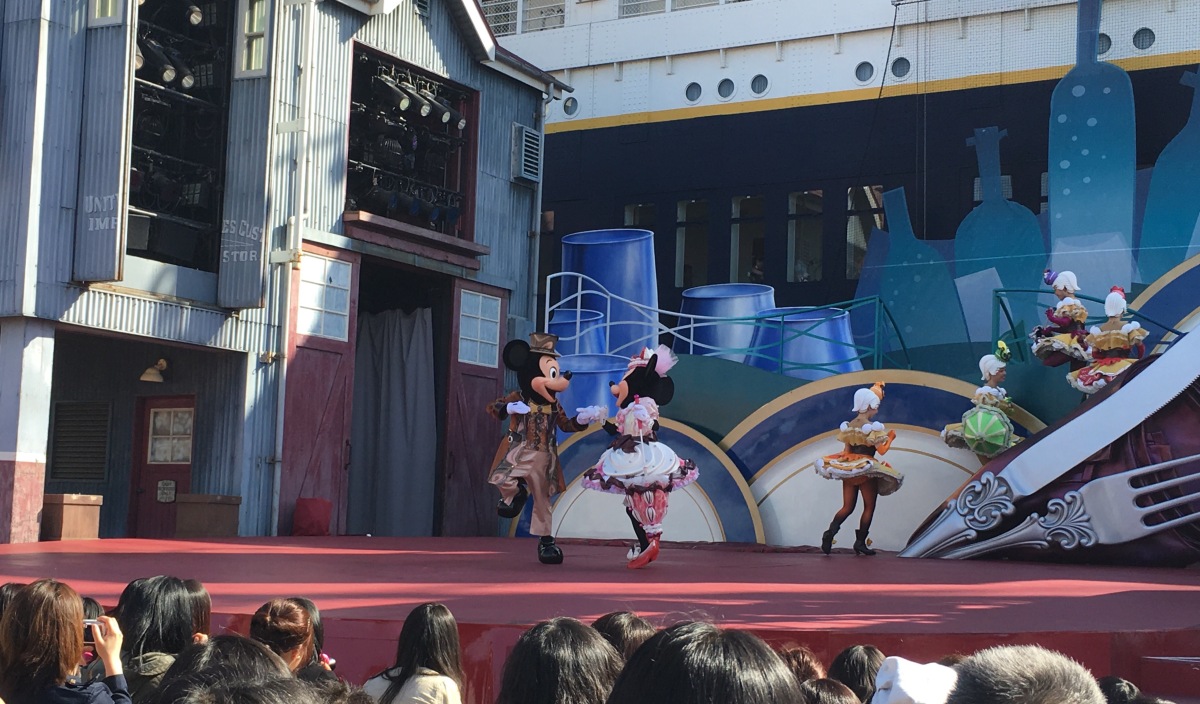My wife and I are huge fans of Disney films and of the theme parks. We’ve visited several of the parks around the world, so when we’d booked a trip to Japan we quickly realised that going to one or both of the theme parks would be a unique experience we’d likely never be able to repeat.
After a bit of online research, we found that Disneyland Tokyo was very much a replication of the Magical Kingdom seen frequently around the world, primarily aimed at children with lots of meet-and-greets, slow-moving story rides and not many faster roller-coasters.
DisneySea on the other hand was aimed at older parties, with a fair amount of thrill-seeker rides, some unique rides and events not in other parks and a few more adult-oriented restaurants.

What’s so special about it?
DisneySea features a number of rides and activities that are exclusive to the park. This includes two exceptional fast-moving rides at the top of the park in the Lost River Delta area: Indiana Jones and the Kingdom of the Crystal Skull and Raging Spirits. For us these were the best two rides in the park: the first a fast, jolty, exciting adventure and the second an exceptionally quick roller-coaster.
Elsewhere there are two highly popular rides in the centre of the park at Mysterious Island, a handful of great stage shows, a great version of Fantasmic (a video projection, boat performance and fireworks display that features at a number of parks), some familiar favourites and a great choice of restaurants. If you’re in the Tokyo area of Japan and have enjoyed Disney theme parks in the past, this is definitely one you should add to your list.
Can it be done in a day?
All the advice we saw online said it couldn’t be done in one day, that you needed at least two or maybe three days to see everything. After almost but not quite doing everything in one day, we left the park feeling like we hadn’t missed anything we were desperate to do and could have done a ride or two more if we’d really known what we were doing.
Firstly, the layout of the park is a little confusing and everyone else seemed to know where they were going. This meant we were disoriented and, coupled with arriving a little late in the morning, meant we got to our first FastPass at 9:15. You can get a FastPass every two hours, but most of the rides were fully booked by about 13:30, so realistically we only were able to get three FastPass tickets. Actually, in the end we didn’t bother with a third one because we were in a queue and missed out so went for lunch instead.
Secondly, and most importantly, we didn’t realise some of the rides had a single rider feature on them until about midday. If we’d known earlier, we’d have done this much sooner. Without opting for single rider, you can’t realistically do all the big rides.
So how do you do it?
This guide assumes you get your first FastPass at 9am having arrived prior to this time, bought your ticket and spent a few minutes working out where to go.
Step one (09:00): head straight to Mysterious Island and get a FastPass for Journey to the Centre of the Earth. We weren’t overly enamoured by this ride, but it’s so popular you have to do it, especially since it’s a DisneySea-exclusive.
Step two (09:05): Get in the queue for 20,000 Leagues Under The Sea. It’s right next to Journey… and thus makes sense. This should take about 45 minutes. This ride is sinilar to Pirates of the Caribbean in that it’s a slow-moving story-based ride with lots of animatronic characters, with the additional exception that it makes you feel like you’re underwater. Not many thrills here I’m afraid! However, it will be really popular later in the day and you need to do it – don’t just avoid it because we didn’t like it! Again, it’s a DisneySea-exclusive, plus if you understand Japanese you may get more enjoyment out of it.
Step three (09:50): Head up to the top of the park via the “stroooong bridge” and get onto Indiana Jones and the Kingdom of the Crystal Skull using single rider. This was one of two rides you can get on with single rider and doing so will knock about two hours off your queuing time. This is an excellent ride, especially for thrill-seekers, and is another park-exclusive. It’s possibly one of the best rides we’ve ever been on and would be perfect but for Harrison Ford speaking in Japanese.
Step four (10:10): Coming out of Indiana Jones, go left and do exactly the same for Raging Spirits, getting a single rider and jumping straight on to the ride. This will take, in total, about twenty minutes. Another fantastic ride for thrill seekers and well worth doing, especially for the 360 degree loop.
Step five (10:30): By this stage you will have the option to repeat one or both Indiana Jones and Raging Spirits, if you enjoyed them both enough to do so and have the time to. You’ll have time to kill before you get your next FastPass at 11:00, but you NEED to get it at the earliest opportunity. Another option would be to simply take a stroll over to the area for your next FastPass at the Tower of Terror. This is in the American Waterfront area, also home to two great stage shows: A Table Is Waiting on the Dockside Stage (a comedy show that is all visual) and the Big Band Beat at the Broadway Music Theatre (a brilliant and classy tribute to the music theatres of New York City). If you’re lucky you could catch one of them on your way through, or you could just grab a snack or drink somewhere and take in the fantastic scenery and ginormous ship in the New York Harbor – the SS Columbia.
Step six (11:00): Go to get a FastPass for the Tower of Terror. The time will be disappointingly late in the day for you, probably around 7pm, but it’s the only way you’ll enjoy this excellent ride that has a completely different back story to the USA version given it has no tie-in with The Twilight Zone. Don’t worry – they will provide a translation of the back story before you start.
Step Seven (11:10): Now will be about the right time to get in line for Journey to the Centre of the Earth. It’s mainly a dark-ride attraction that tells a story, but does speed up a bit near the end to give you a bit of a thrill.
Step Eight (11:30): If you want to single-rider any of the rides at Lost Island Delta again, now is your chance. It will take another 40 minutes but those two rides are well worth it.

Step Nine (12:10): It’s time to pick up some lunch from a vendor – we recommend the giant turkey legs located in the Mysterious Island – and get in line for the last big ride we’re yet to touch on: StormRider. It’s the only attraction of note in Port Discovery and is set to close in May 2016, so get this in whilst you can. Queuing for this is the only way now that you can get on it, but since there’s nothing else you haven’t done that’s aimed at adults this is the best option. Expect to queue for around 90-120 minutes for it.
Step Ten (14:30): After such a hectic morning, you now have about five hours to do with as you please before your Fast Pass for The Tower of Terror and Fantasmic. This was the point we chose to get on a gondola and ride around their interpretation of Venice, took a stroll through Mermaid Lagoon (none of the rides appealed) and really absorbed the park.
If any of the other rides take your fancy then now would be the time to go for them. However, there’s plenty to see and you need to take it all in! There’s also chance to do some shopping and pick up some souvenirs.

Step Eleven (17:30): Dinner time brings many options. For parties with fussy eaters not used to Japanese cuisine, a good option is Sailing Day Buffet in the American Waterfront, which offered some Asian options but also steak, steamed veg, loads of salad options, Italian-style pasta and free refill soda. You get to eat for up to two hours.
Step Twelve (19:30): Tower of Terror fast pass will be around now.
Step Thirteen (20:00): Fantasmic. A must-see!
Step fourteen (21:00): Home.
Conclusion
Hopefully this guide will help you get the most out of a single day at DisneySea. Sure, there is plenty to do if you want to spread it over two days, but if you’re short for time then plan ahead and it can be done.
Have a great time and let me know if you found this guide useful!
















